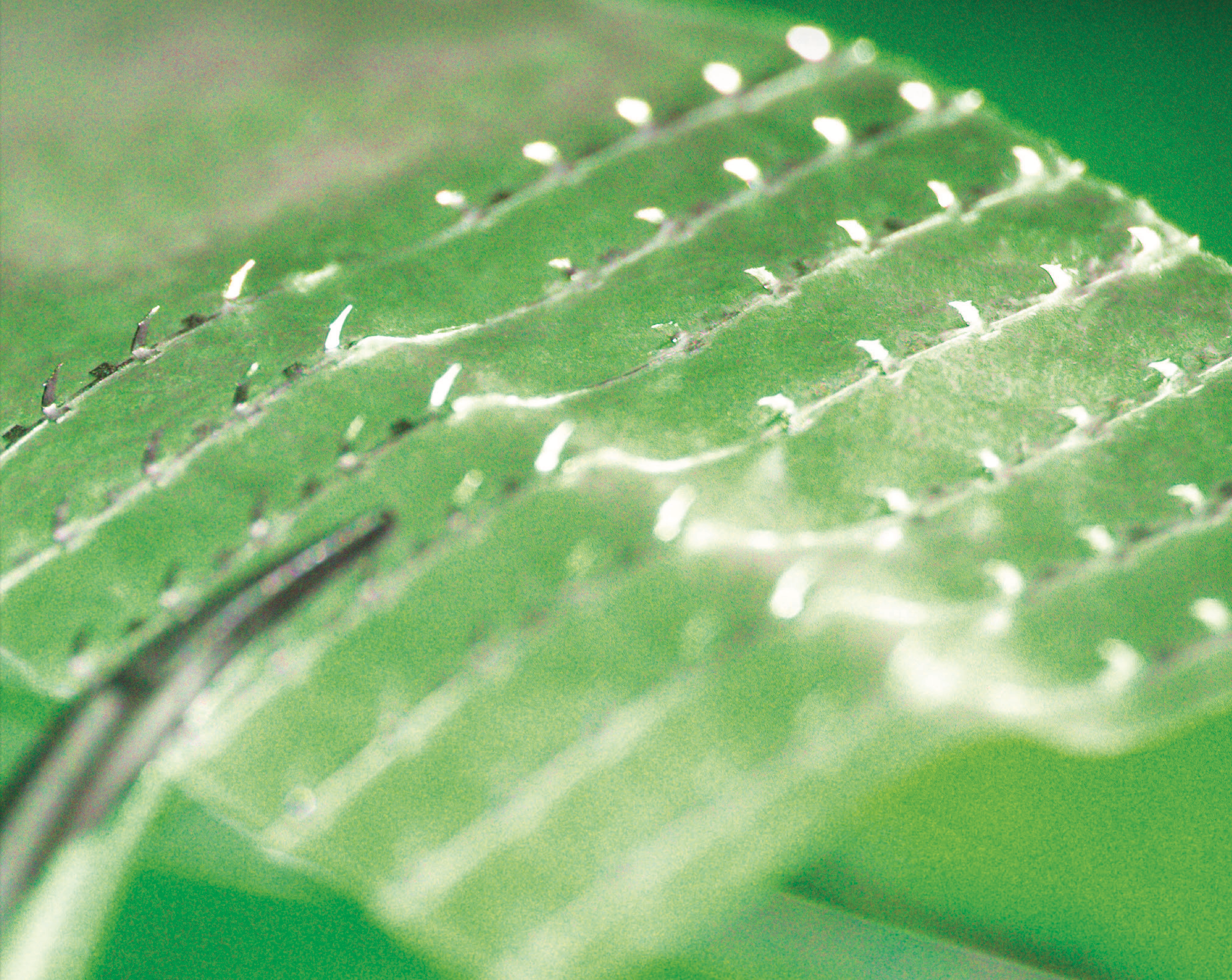Creating high-tech tape for fixing and aligning injured peripheral nerves
What if you could connect and repair torn peripheral nerves using high-tech tape?
VCU orthopaedic surgeon Jonathan E. Isaacs, M.D. believes it’s possible. The hand surgeon and a group of collaborating engineers has patented and is seeking FDA approval for Nerve Tape, a device consisting of microhooks embedded in a biologic wrap. The tiny hooks bind firmly, safely, and reversibly to the nerve’s outer connective tissues to align peripheral nerves following traumatic injuries. The tape can ultimately lead to better nerve regeneration and clinical recovery.
 After nearly a decade working on ways to improve outcomes for patients with such injuries, Isaacs and the Atlanta-based BioCircuit Technologies Inc. have created the nerve-repair device to replace what the VCU orthopaedic’s hand surgery division chief calls the gold standard to this point: microsutures.
After nearly a decade working on ways to improve outcomes for patients with such injuries, Isaacs and the Atlanta-based BioCircuit Technologies Inc. have created the nerve-repair device to replace what the VCU orthopaedic’s hand surgery division chief calls the gold standard to this point: microsutures.
Isaacs said he’s hoping Nerve Tape will make strides in an area where, at best, he sees high-quality results in only about half of nerve reconstruction surgeries.
“When it comes to reconstructive surgery, nerve repairs are an unsolved problem. Even good surgeons sometimes can’t get a good quality alignment of their repairs,” Isaacs says. “I believe we have a concept that can truly improve outcomes.”
Part of that challenge stems from current methods. Microsutures are time-consuming and require a great deal of skill. Another downside: they can generate scar tissue, which impedes nerve regeneration.
Nerve Tape, on the other hand, connects the two ends of a cut nerve with tiny hooks, then material is wrapped around the nerves to keep them closely aligned to promote regeneration.
BioCircuit is “perfect partners for this endeavor,” Isaacs says. The company has expertise in microfabrication and had used the technology to assess nerve damage. The microhooks, barely visible by the naked eye, are fabricated from nitinol, a metal commonly found in medical devices. Nitinol is more flexible and not as susceptible to crimping as stainless steel, yet is strong enough to penetrate tissue. Federal funding through a series of NIH grants has supported development and refinement to the prototypes, which appear to be a commercially viable tool.
“From what we’ve seen, it’s remarkably more efficient than microsuture repairs,” Isaacs said, “and seems to get consistently better alignment.”
Isaacs is confident Nerve Tape will earn FDA clearance and will be available for clinical usage in the very near future.
